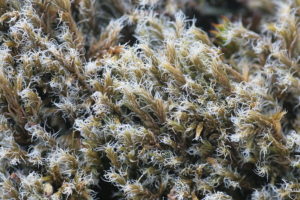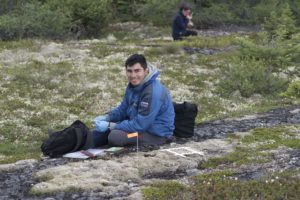
As part of his Ph.D. project, Dennis Escolástico and collaborators did research on cryptic speciation of a northern distributed moss.
Wide spatial distribution ranges spanning different continents are characteristic of spore-dispersed organisms, such as plants and lichens. Bryophyte species exhibit worldwide and disjunct distributions as evidence of their vagility, but increasing research indicates that some widely distributed taxa with homogeneous morphology may represent separate evolutionary lineages. In addition, the evolutionary histories of these cryptic lineages may be related to historical factors, such as the climatic oscillations in the Quaternary.
This exciting subject has led us to the subarctic/arctic species Racomitrium lanuginosum (Hedw.) Brid., which reproduces mainly by clonal growth forming extensive carpets and contributes to the nitrogen budget of the tundra due to its epiphytic nitrogen-fixing bacteria.
The research focused on two aims:
- To determine whether R. lanuginosum comprises differentiated molecular taxa across its distribution range in the Northern Hemisphere.
- To test whether populations inhabiting previously glaciated and ice-free areas during the LGM differed in patterns of genetic diversity.

They used an integrative approach that included the internal transcribed spacer (ITS), single nucleotide polymorphisms (genotyping-by-sequencing), and species distribution models to accomplish our objectives.
The results indicate that Racomitrium lanuginosum comprises distinct molecular lineages sympatrically distributed in the Northern Hemisphere. We also uncovered long-distance dispersal from eastern North America to Scandinavia and potential in situ survival in northern Scandinavia. Due to the genetic signatures, the Alaska Peninsula could be considered a glacial refugium. The species experienced post-glacial expansion northwards in the Northern Hemisphere, mainly from the Alaska Peninsula.
This research exemplifies the complex phylogeographic history in cold environments and contributes to recognizing evolutionary patterns in the Northern Hemisphere.
More on the research here: Escolastico_etal_2022. Cryptic speciation shapes the biogeographic history of a northern distributed moss